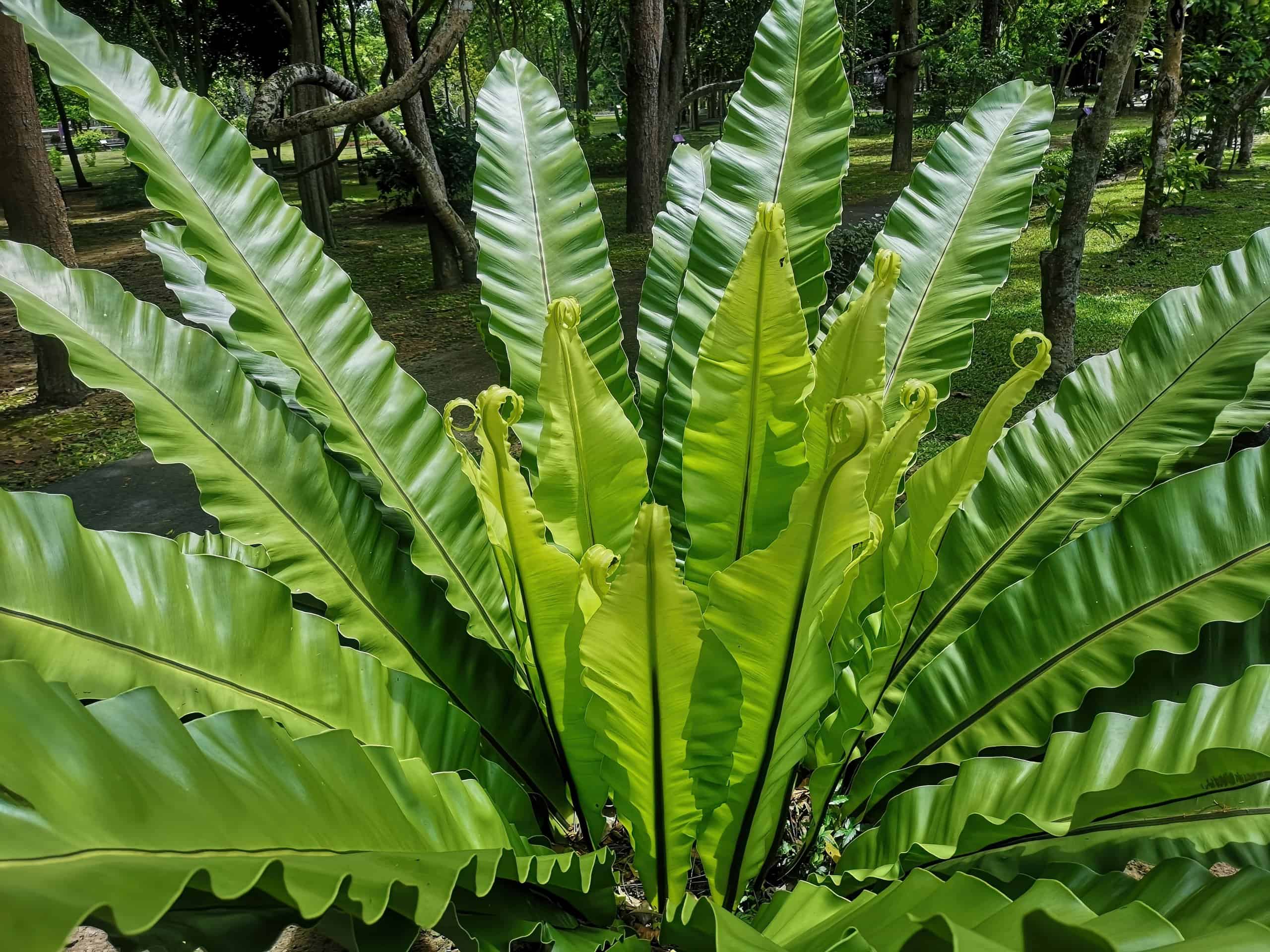Are you an avid collector of houseplants? Then you know that it’s never enough to just own one! Ferns are great indoor houseplants. They come in many different sizes, colors, and shapes. Some can even thrive in hanging baskets and add volume and personality to your home. Follow along to discover the 9 best types of indoor ferns to elevate your houseplant collection and some care tips.
1. Bird’s Nest Fern
The first fern on our list is the bird’s nest fern. The scientific name for this plant is Asplenium nidus. This fern is a very popular choice for those of us with limited outdoor space. The bird’s nest fern is a bright green fern that thrives in warm, humid, and shady environments. It’s native to parts of Asia, Australia, and Africa.
This is a perfect indoor fern because it doesn’t take up a lot of space and you can keep it in your bathroom. Outdoors, it can reach up to 5 feet tall, but indoors it usually stops growing at 2 feet. Bird’s nest fern leaves are vibrant, long, and often crinkled. Outside, it grows on other plants, including palm trees. When grown inside, bright light and partial shade are required. Too much light can cause wilting and yellow leaves.
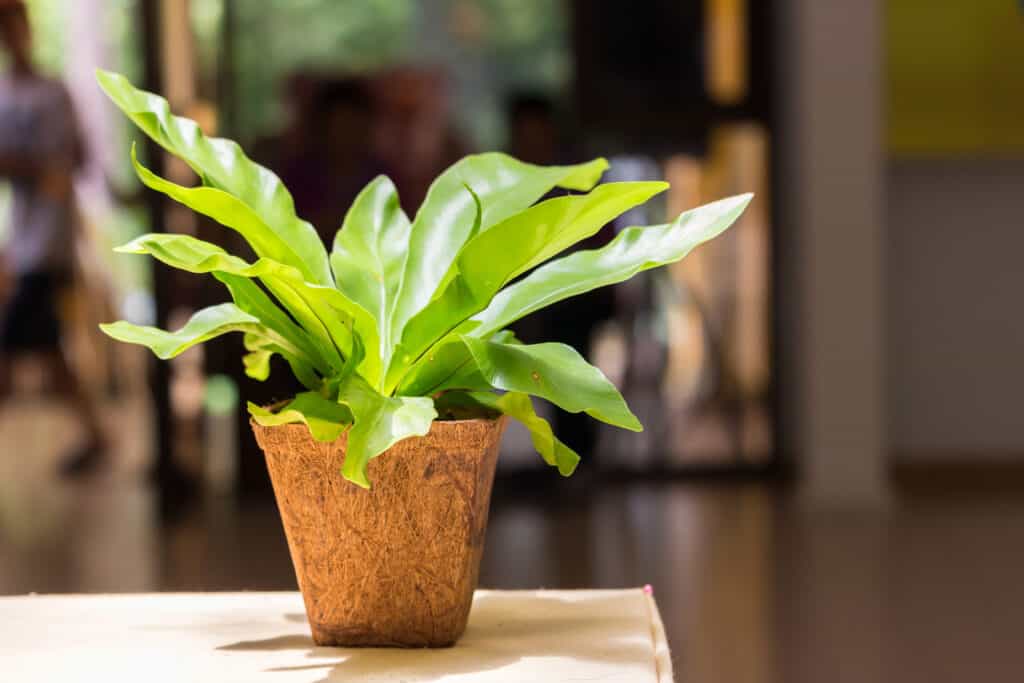
The scientific name for the bird’s nest fern is Asplenium nidus.
©Toey Toey/Shutterstock.com
2. Boston Fern
The next best indoor fern on our list is the Boston fern, also called the sword fern. It’s native to the Americas. The Boston fern’s scientific name is Nephrolepis exaltata. It’s a beautiful and vibrant green plant with many long fronds with little leaflets. The plant indoors usually reaches up to 2 feet long and wide. However, in its natural habitat, it can grow up to 4 feet and 11 inches tall.
Boston ferns have many cultivars. They are widely grown as indoor houseplants in the United States. The Marissa Boston fern is a popular cultivar as its dwarf, perfect for small spaces. A tip to help you grow a thriving Boston fern is that this plant requires a lot of humidity. Misting is necessary when relative humidity falls below 80%.
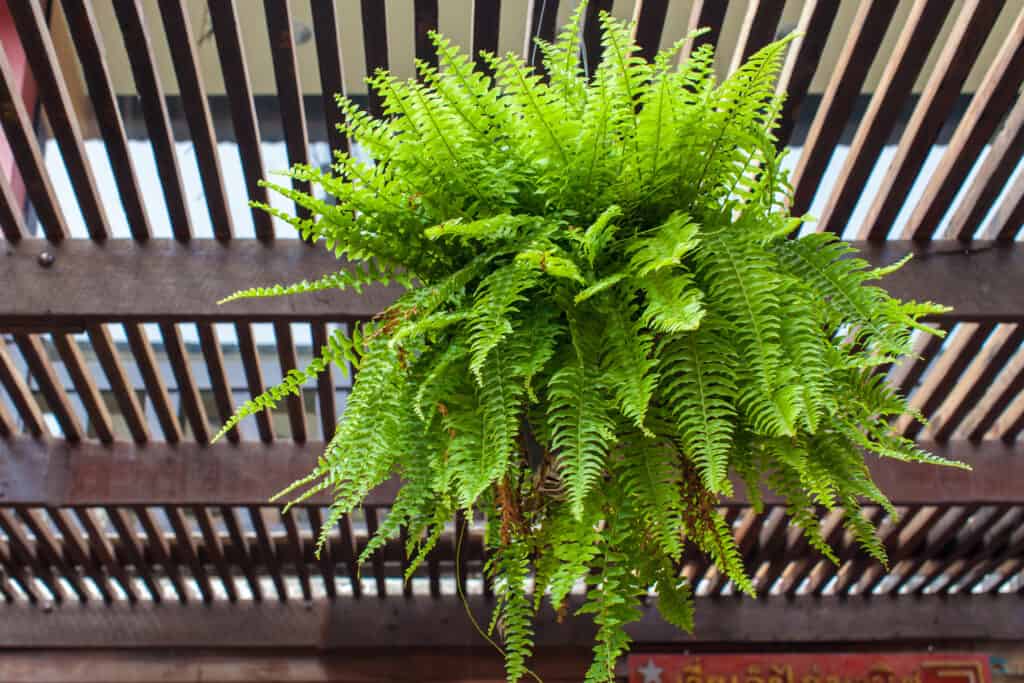
Boston ferns need a lot of humidity.
©Jeerayut Rianwed/Shutterstock.com
3. Lemon Button Fern
The third best type of indoor fern on our list is the lemon button fern. This unique and lovely fern is affordable and perfect for avid houseplant collectors and absolute beginners. Even if you don’t think you have a green thumb, this plant is a great option. They can withstand some neglect including bright and low light. Technically, the lemon button fern is a dwarf variety of the Boston fern listed above.
Lemon button ferns are known for producing a light lemon when crushed. The small leaflets resemble buttons. Another name for this lovely indoor fern is the little-leaved sword fern. A care tip for you is to never place your lemon button fern in direct sunlight. The leaves are delicate and can burn.
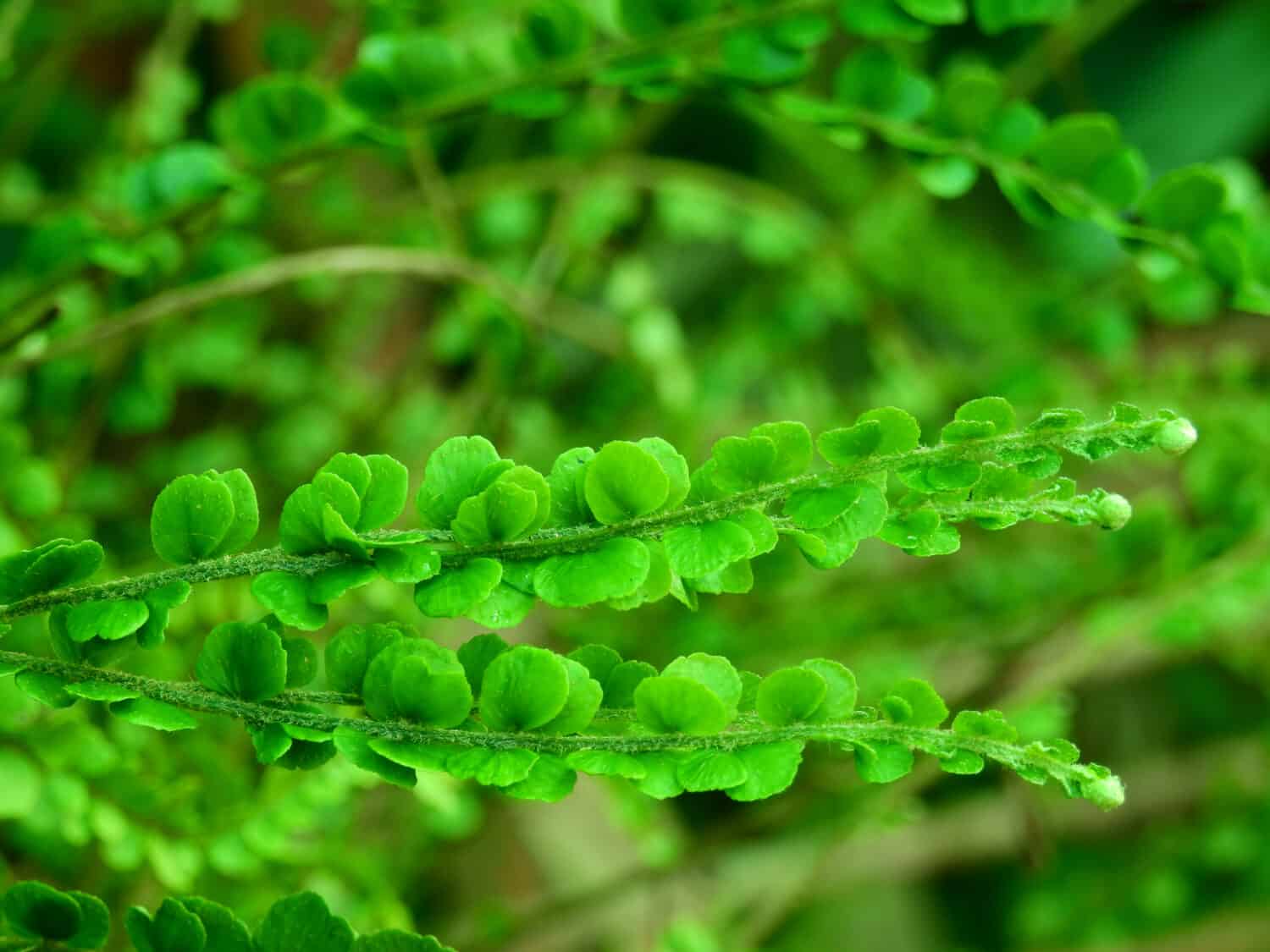
Lemon button ferns are easy to take care of. They aren’t fussy ferns.
©KRPD/Shutterstock.com
4. Staghorn Fern
The next best indoor fern on our list is the staghorn fern. This dreamy and vivid plant looks a lot like deer horns. Unlike the other ferns on this list, this fern is usually grown on a hanging basket or mounted. When mature, they are about 2 feet tall and 3 feet wide. This plant is an amazing decorative piece if you’re looking to add more greenery and depth to your home. It also doesn’t take up a lot of space since you can mount the plant onto a wall. It’s important to know though that this fern needs bright indirect light. While it can still live under low light conditions, the color of the leaves fades.
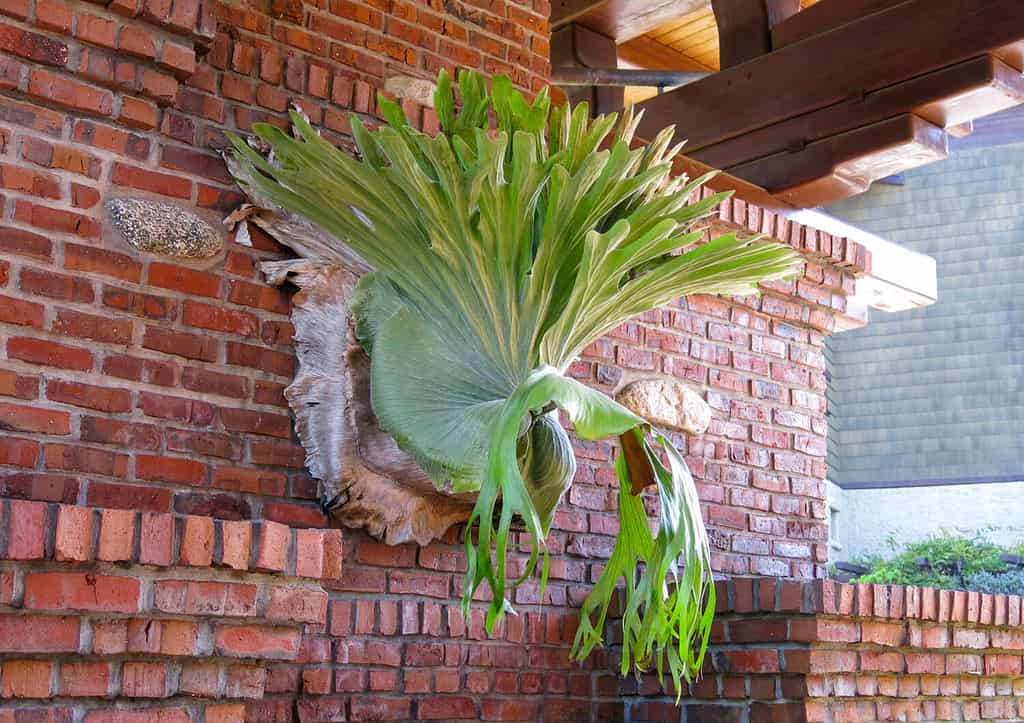
Staghorn herns are usually mounted or grown in a hanging pot.
©EditheVideo/Shutterstock.com
5. Kangaroo Fern
Have you ever heard of kangaroo fern? The leaves are long, leathery, and dark green. This plant is also sometimes called the kangaroo paw fern. Its scientific name is Zealandia pustulata. This lovely and sleek species is native to eastern Australia and New Zealand. So, why is it named kangaroo fern? When the leaves are mature, the leaves resemble the shape of a large kangaroo foot.
This lovely plant is best suited for houseplant lovers with experience. It requires moisture, but too much water can also lead to root problems. Sometimes, less is more. If you aren’t sure how much water your fern needs, start slow. It’s easier for a kangaroo fern to bounce back from under-watering compared to over-watering.

Mature kangaroo fern leaves resemble large kangaroo paws.
©mizy/Shutterstock.com
6. Maidenhair Fern
Although in no particular order, the sixth best type of indoor fern is the maidenhair fern. This fern is loved for its unique leaflets. The maidenhair fern has small fan-shaped leaves. It grows well in high humidity. This plant is a great piece to add to your collection, especially if you have space in your bathroom.
This delicate plant is also loved for its compact size. It’s great for small spaces, so if you live in an apartment and want to reap the benefits of owning a fern, the maidenhair fern is a good option! It’s important to note that maidenhair ferns are slow-growing plants. They take about three years to mature.
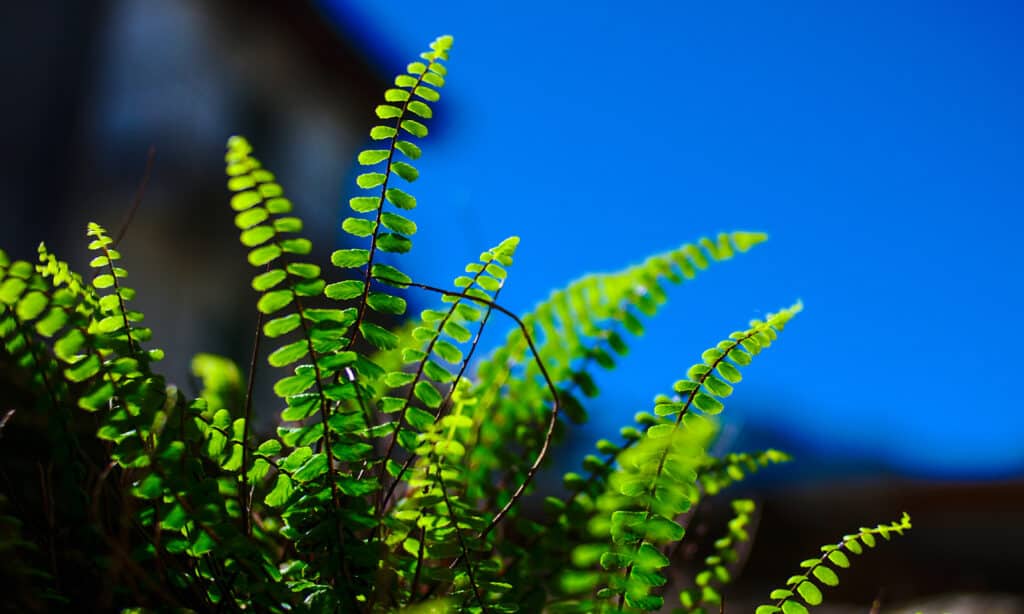
Maidenhair ferns are compact.
©Willi Burkhardt/Shutterstock.com
7. Christmas Fern
Another indoor fern to make our list is the Christmas fern. The Christmas fern is a bright, long, and thick fern native to eastern North America. Its native range is from Nova Scotia to eastern Texas. Although most of us imagine red and green flowers and plants during Christmas, this fern doesn’t have any splashes of red. However, during Christmas and winter, it keeps its dark velvety foliage, which resembles one of the holiday colors.
Christmas ferns are excellent indoor houseplants. It’s a fast-growing plant that requires little light, perfect for small spaces with bright windows. If you want a deep rich green fern, this is the one for you!

The Christmas fern has a clumping growth habit. They are native to eastern North America.
©Young Swee Ming/Shutterstock.com
8. Strap Fern
The next best type of indoor fern is the strap fern. The scientific name for this lovely fern is Campyloneurum phyllitidis. It’s sometimes also called the long strap ferm. This stunning fern is best known for its long and thick leaves. It’s native to North, Central, and South America. However, it’s also found in the Caribbean including Cuba.
In the wild, strap ferns grow on top of other plants. The leaves are about 18 to 39 inches long and slightly curled or crinkled. This plant has been cultivated for hundreds of years as an ornamental. For instance, it was grown in England during the Victorian era.
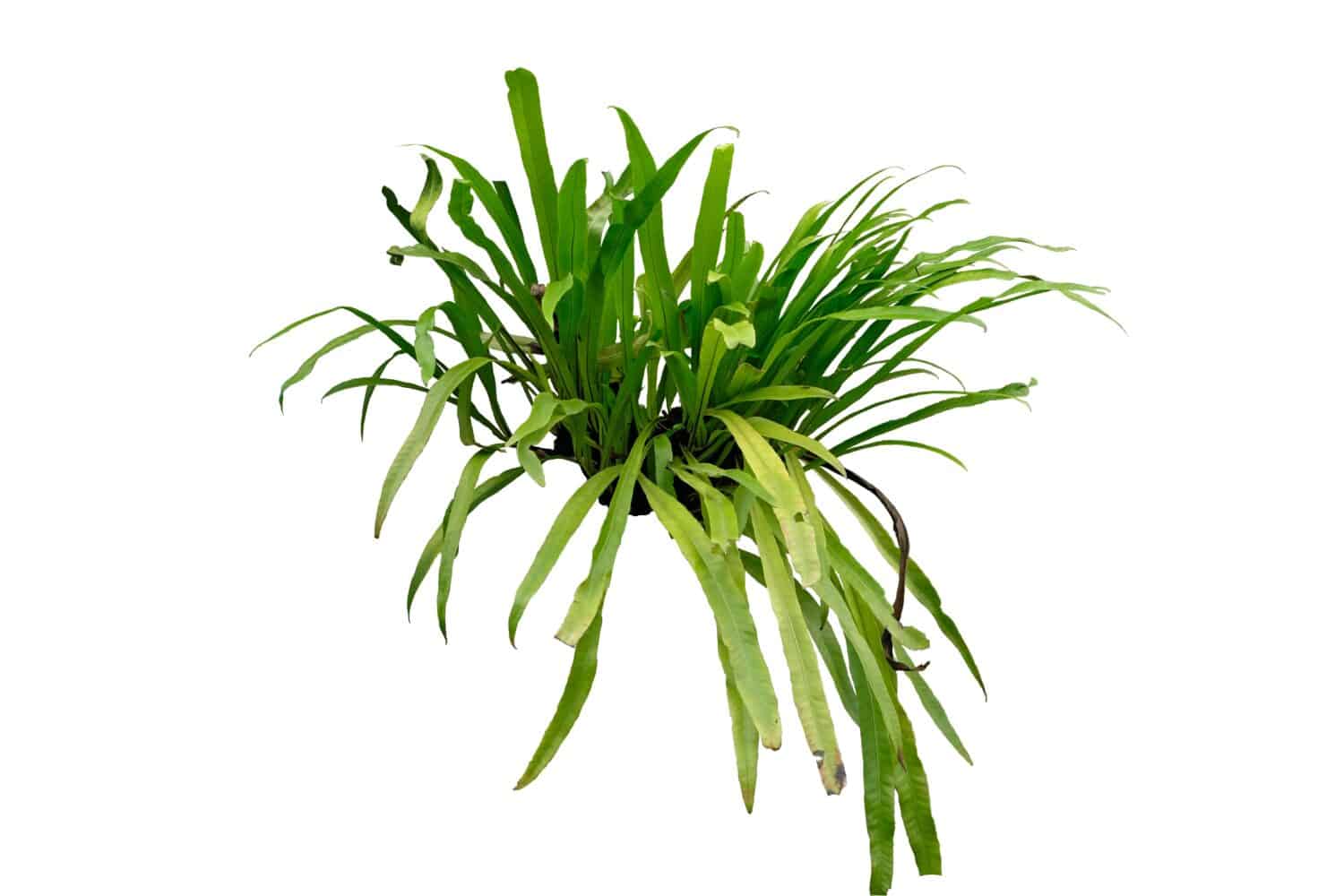
Strap ferns are easy to grow as indoor ornamentals.
©kaiwut niponkaew/Shutterstock.com
9. Squirrel’s Foot Fern
Last but not least is the squirrel’s foot fern. This eye-catching and striking fern is a great addition to any indoor houseplant collection. Squirrel’s foot fern is a lovely plant native to tropical Asia. The scientific name for this fern is Davallia trichomanoides. Another name for the squirrel’s foot fern is the black rabbit’s foot fern. This hardy plant is resilient and strong. It thrives in humid and dry conditions.
Squirrel’s foot fern needs partial or full shade. Too much bright light, artificial or natural, can burn and harm the leaves. This low-maintenance plant is awesome for beginners. This evergreen plant is vibrant and bushy. It spreads quickly, so you may need to transplant it frequently into a larger container. These tropical ferns aren’t frost tolerant. If you grow them outside and receive cold winters, you’ll need to bring them inside or place them in a greenhouse.
Thank you for reading! Have some feedback for us? Contact the AZ Animals editorial team.

